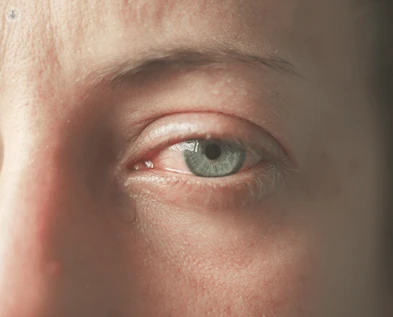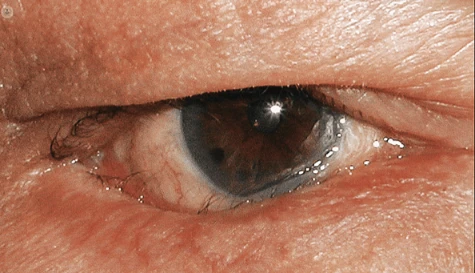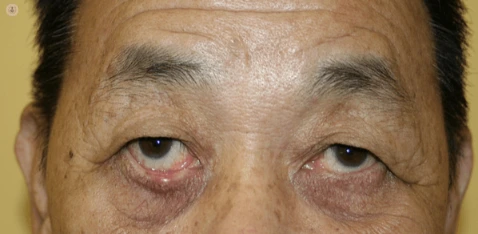Ectropion is the opposite, which is the outward turning of the eyelid away from the eyeball, which leads to dry, watery eyes.Again, it is mostly related to age-related lid laxity, meaning the lid muscles become looser, however, it could be related to cicatricial (scarring) changes as well.
The risk factors for sleep apnoea (SA) are very similar to those of FES: obesity, reaching middle age and being male.
Sleep apnoea is characterised by frequent collapses in the upper airway during sleep, intermittent hypoxia, and interrupted sleep. However, only 2 to 7% of patients with sleep apnoea may be symptomatic, even if they were diagnosed with a sleep study (nocturnal polysomnography).
Literature suggests that FES is associated with sleep apnoea in 85% to 96% of cases, however, the majority of these patients would have no symptoms of sleep apnoea.
On the other hand, the opposite is not clear, which means that patients with sleep apnoea do not have strong a correlation with FES.
Treatment is usually surgical. Lubrication and topical anti-inflammatory drops could be used to ease symptoms until surgery can take place.
The main purpose of the surgery is to increase the tone of the eyelid without sacrificing the tarsus, which usually provides the maximum possible strength to the eyelid. The recommended surgical procedures are the ones that increased the tone to the medial and lateral tendons of the eyelid with minimal sacrifice or no sacrifice of the tarsus..
Patients do need to keep in mind, however, that there is a considerable rate of recurrence of FES, which might need further procedures.
To learn more about Mr Almousa’s medical services and to receive his help for floppy eyelid syndrome or other eye conditions, visit his profile..



